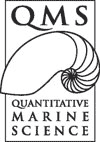
Modern Mathematical Methods in Physical Oceanography Summer School
Breckenridge, CO, USA. August 13-22, 2006
This Summer school summer course focused on state-of-the-art mathematical methods applied to Physical Oceanography and presented by some of the leading researchers in the field along intense lectures and tutorials. Students from around the world attended the course and shared with one another their different mathematical, physical, engineering backgrounds as well as their INQUIETUDES.
The course was scheduled as follow: lectures early in the morning, with a coffee break, a computer tutorial in the afternoon followed by a couple of lectures in the evening. Each lecturer introduced a new topic in each lecture although some topics were more complex and needed of several lectures to be completely covered. Among others, a wide range of subjects were shown such as turbulence, dynamical systems theory, information theory, stochastic differential equations, numerical analysis and, control and sensitivity theory. All of them were applied to different areas of research like upwelling system, large ocean circulation, mixing effects, atmosphere-ocean events such as El Nino.
Lectures were quite well presented, with notes you could follow from the course webpage as we had wireless connexion available at any time in the auditorium, and free internet access from our rooms. Questions made by students were always welcomed although some questions and answers to the audience seemed to be directed to the other lectures, and so, it became harder to follow for the complexity and extended in details of the discussion. Due to the diverse range of topics, the background of some students allowed them to understand and follow some lectures better than others did. Some lecturers exposed such modern techniques that made almost impossible to understand for most of the students.
I really enjoyed most of the lectures, specially the one given By Dr. David Marshal whose discussion about the wind driven circulation was great and so clear that even the greatest equations displayed were easy to cope with. Dr. Andy M Moore used his good sense of humour to explain an adjoint method to study the upwelling system in the Californian Coast .
Since students and lecturers were allocated in the hotel and meals were offered at the same time and place, it was very easy to introduce yourself and to get to know most of the participants if not all. I was able to talk about my project and to make valuable contacts, not only with the researchers but also with the other students.
The knowledge of all those different mathematical methods and applications in Oceanography has improved the way to approach some of the problems I'm facing during my PhD, and also allowed me to understand the importance of choosing the right method for each case and at the same time, of being aware of the existence of different techniques to solve the same problem.